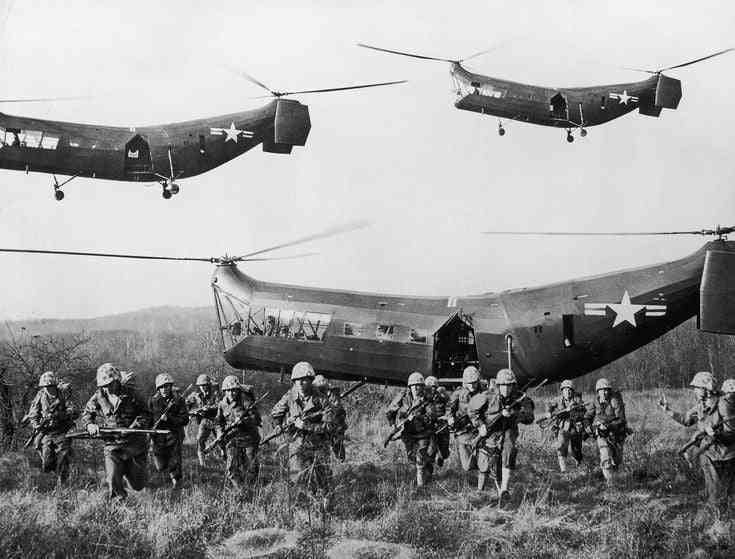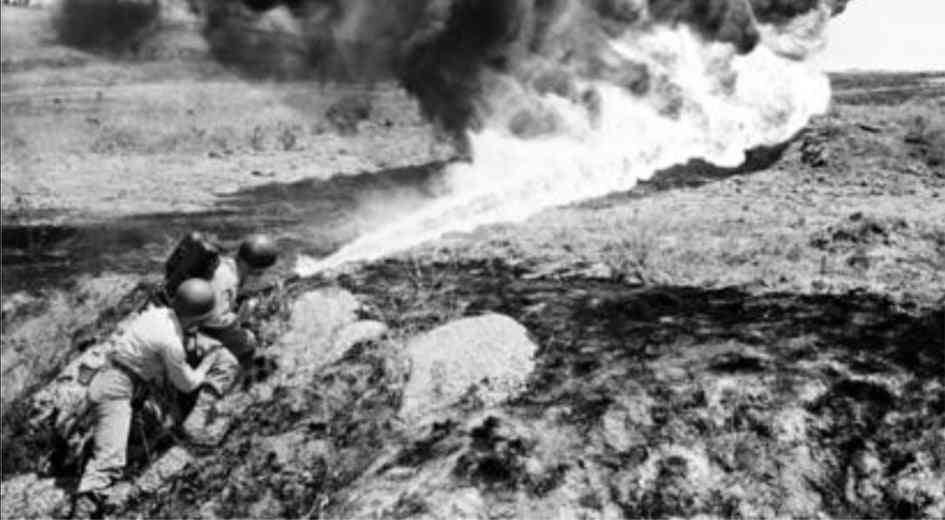The first war of an international dimension after the Second World War, and one of the direct results of the cold war between the capitalist and communist poles the United States was the prominent party in it, and it came out of it and lost
thousands of victims between the dead and missing and wounded. Despite all the financial, military and human potential amassed, the Korean War ended, and the Communists did not leave the Korean Peninsula, and the result was neither victory nor victory.
Causes of War

Modern Korean history is a series of conquest and invasion. As soon as the Second World War ended in 1945, until Russia occupied the northern part of the Korean peninsula, there was a communist regime, while the United States controlled the southern part where a democratic system was established. The two Korean parts are latitude 38. In December 1948, Russia withdrew from the northern part, demanding that the United States withdraw from the South Korean, which was actually done.
North Korea, more armed than its southern sister, seized the opportunity, unleashing its forces on June 25, 1950, exceeding latitude 38. The Korean crisis, which quickly turned - in the shadow of the Cold War - into an international crisis began with its war raging for three years.
The United States and military crowds


America followed 16 countries and adopted a Security Council resolution to intervene in Korea.
The United States, two days after North Korea invaded its southern allies, went to the United Nations Security Council and issued a resolution that was taken in the absence of the Soviet Union and which provides for military sanctions against North Korea. According to the resolution, a force consisting of 16 countries was formed.
US President Harry Truman has called on the NATO naval and air forces to come to the aid of the South Koreans and to protect the island of Taiwan from the possibility of another communist invasion. He also ordered the American ground forces residing in Japan to go to South Korea.
The coalition that America mobilized - under the cover of the United Nations - consists of the following countries: Australia, Belgium, Luxembourg, Canada, Britain, Colombia, Ethiopia, Greece, the Netherlands, New Zealand, South Africa, Thailand, and Turkey, while Denmark, India, and Sweden have sent medical teams. These forces were led by American General Douglas MacArthur, the military ruler of Japan at that time.


Invasion and counter-invasion
The North Korean military plan was rigorous. Five days after the invasion, they entered Seoul, the capital of South Korea, on June 28, and besieged their opponents in a narrow strip of land around the coastal city of Busan in the southeast of the Korean peninsula.
The reaction of the United States was two and a half months later. On September 15, 1950, American General MacArthur landed a naval landing behind the North Korean defense lines, and his forces were fortified near Inchon, a coastal city in western South Korea, 40 km west of the capital. It was not two weeks before the American victory over the North Koreans became evident. Seoul, the southern capital, was restored on September 28, and the North Koreans were forced on the thirtieth of the same month to retreat to the 38th parallel.


Latitude 38 and Chinese position
The Chinese military intervention in the Korean War constituted an important turning point in the war’s process and the development of its field results.
US President Harry Truman, insisting that he must get rid of the Communists, ordered General MacArthur and his forces to cross the 38th parallel and track the North Korean armies until the last Communist was removed from the Korean peninsula.
On October 7, 1950, the United Nations forces, under American leadership, entered North Korea and occupied the Pyongyang capital on the 18th of the same month. It was not until the 25th of that month that some of the vanguards of General MacArthur's army reached the banks of the Yalu River separating the Korean peninsula and China.

And as soon as these forces reached the borders of China, the Sixth Chinese People's Army, led by General "Lin Biao", who entered with the Americans and their allies, entered a decisive battle, after which the international army retreated.
The conditions were in the interests of the Chinese army, as the cold was bitter and General MacArthur's soldiers were scattered. The attacking Chinese army eventually reached 340,000 soldiers and equipped more than the International Army. Thanks to the attacking Chinese army, Pyongyang returned to the Communists seven weeks after the US occupation, on December 4, 1950. A month later, the Chinese reoccupied Seoul on January 4, 1951.

The American response or "Operation Keeler"
On January 21, 1951, the Eighth US Army backed the international forces with a landslide attack on the Chinese army in South Korea during an operation known as the "Keeler operation". Seoul was restored on March 14 of the same year after the Chinese withdrawal. The US military continued to crawl northward until it reached latitude 38 and slightly surpassed it on April 22, 1951. General MacArthur was anxious to pursue the military offensive and was isolated and appointed General Matthew Ridgway who was more moderate than his predecessor, a US indication of a change in strategy.

Armies, weapons and casualties
The numbers of armies fighting in the Korean crisis were as follows:
- The United States: 260,000 soldiers.
- United Nations: 35,000 soldiers.
- South Korea: 340,000 soldiers.
- North Korea and China combined: 865 thousand soldiers.
The Korean War lasted three years, and its victims amounted to four million people. It represented the hottest summit of the Cold War between the Communist and Capitalist camps, and there was neither a winner nor a winner.
The air force played an important and decisive role in the Korean war fights. For the first time and after World War II, motorized military aircraft were used.
As China has emerged in the field of air attack, it had 1,400 military aircraft, half of which were Soviet MiG-15, which was once the best military plane in the world. And the power of Chinese aviation was not overcome until after that year America developed an F / 86 with which it was able to reward the MiG-15.

America has focused on cutting off the supplies of the Chinese army, and on destroying North Korea's airports, railways, bridges, electrical plants and industrial centers. North Korean bases located on the beaches were also bombed.
The Korean War has known brutal coexistence on both sides. North Korea and China have accused the United States of using biological weapons against their soldiers, and prisoners of American soldiers and their allies have been subjected to the most brutal forms of torture at the hands of the Communists.
The number of human casualties between one dead and one missing and one injured is about four million, and civilian casualties were twice as much as that of military personnel. The victims are distributed as follows:
- Korea:
147,000 South Korean soldiers killed and 210,000 injured.
300 thousand North Korean soldiers killed and 220 thousand wounded.
The number of Korean civilian casualties has exceeded 2 million. - United States:
157,530 victims, 23,300 of whom died on the battlefield. - The allies of the United States (the International Army)
16,532 victims, including 3094 dead. - China:
900,000 victims, including 200,000 dead.

Peace negotiations
Since June 23, 1951, after a year of fierce battles, the Korean conflict between two parties has become neither victorious nor defeated. Neither the Americans nor their allies have defeated the tide of communism on the peninsula, nor have the Korean Communists and their Chinese allies managed to unify the two halves of Korea under the red color. The representative of the Soviet Union at the United Nations offered a ceasefire, and no agreement was reached between the United Nations and China until 27 July 1953 in the village of Panmungum, located on the 38th parallel separating the two Koreas.

Stay with Utopia Educators. Thanks


